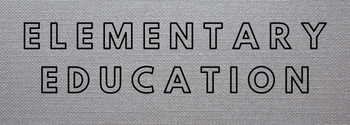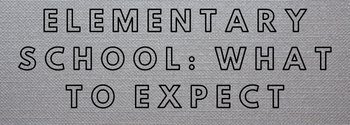Capturing Shock: Mastering The Art Of Writing Surprise
Are you tired of writing predictable and mundane content? Do you want to spice up your writing with a touch of surprise and captivate your readers’ attention? Look no further, as we explore the art of depicting surprise in writing. Whether you are a seasoned writer or just starting your writing journey, incorporating elements of surprise in your writing can make a significant difference in how your audience perceives and engages with your work. In this article, we will discuss the importance of depicting surprise in writing and share some tips on how to effectively use it in your writing. So, let’s dive in and discover the power of surprise in writing.
Depicting Surprise in Writing
Surprise is a powerful emotion that can evoke a range of reactions from readers. As writers, it is important to be able to effectively convey this feeling in our writing to create a lasting impact on our audience. In this article, we will explore different techniques and strategies for depicting surprise in writing and how it can enhance the overall quality of our work.
Using Descriptive Language
One of the most effective ways to depict surprise in writing is by using descriptive language. This involves carefully choosing words that are vivid and expressive, allowing the reader to visualize the scene and experience the same emotions as the characters. For example, instead of saying "She was surprised," you could say "Her eyes widened and her jaw dropped in shock." This not only paints a clearer picture but also creates a stronger emotional response in the reader.
It is also important to vary the use of descriptive language throughout the story. You can start with subtle hints of surprise and gradually build up to a more intense description as the story progresses. This will create a sense of anticipation and keep the reader engaged in the story.
Dialogue and Tone
Dialogue is another powerful tool for depicting surprise in writing. The way a character reacts and responds to unexpected events or information can reveal a lot about their personality and add depth to the story. When writing dialogue, pay attention to the tone and word choice used by the character. A character who is genuinely surprised may use phrases like "Wow!" or "I can’t believe it!" while someone who is trying to hide their shock may use more subtle language or even deny it outright.
In addition to dialogue, the tone of the writing itself also plays a crucial role in conveying surprise. The language used should match the intensity and level of shock being portrayed. For instance, if a character is shocked by a small event, the language used should be milder compared to a major plot twist. This will help the reader connect with the characters and feel the same emotions as they experience them.
Plot Twists and Reveals
A well-written plot twist or reveal can be a powerful tool for depicting surprise in writing. It can take the reader by surprise and leave a lasting impact on them. A plot twist is unexpected and completely changes the direction of the story, while a reveal is a piece of information that was previously unknown but is now revealed to the reader. Both techniques can be used effectively to portray shock in writing.
However, it is important to use plot twists and reveals strategically and not rely on them too heavily. Overusing these techniques can make them lose their impact and make the story predictable. It is also crucial to foreshadow these events and hints throughout the story to make them feel more natural and not abrupt.
Suspense
Suspense is another effective way to depict surprise in writing. By building up tension and hinting at something unexpected to come, you can keep the reader on edge and create a sense of anticipation. This can be achieved through various literary devices such as cliffhangers, red herrings, and dramatic irony.
Cliffhangers are endings that leave the reader hanging and wanting more, creating suspense and curiosity. Red herrings, on the other hand, are misleading clues that steer the reader in the wrong direction, only to be surprised by the actual reveal. Dramatic irony, where the audience knows something that the characters do not, can also add to the suspense and surprise element in writing.
Formatting and Pacing
The way a story is formatted and paced can also contribute to the depiction of surprise. By using shorter sentences or paragraphs, you can create a sense of urgency and keep the reader engaged. This can be especially effective during intense or surprising moments in the story. The use of punctuation, such as exclamation marks, can also convey the character’s excitement and shock.
Additionally, pay attention to the overall pacing of the story. A sudden change in pace can indicate an unexpected event or reveal, creating a sense of surprise in the reader. For example, if the story has been moving at a slow pace, suddenly increasing the pace can signify a shocking moment.
Characters’ Reactions
Last but not least, the reactions of the characters themselves are crucial in depicting surprise in writing. A character’s body language, thoughts, and actions can reveal a lot about their shock and disbelief. For instance, a character may gasp, cover their mouth in shock, or even faint when faced with an unexpected event.
In addition to physical reactions, it is also important to consider the characters’ thoughts and feelings. This can be conveyed through internal monologues or narration, allowing the reader to understand the character’s emotional state. These reactions should also be consistent with the character’s personality and previous behavior to maintain authenticity.
In Conclusion
Incorporating elements of surprise in writing can enhance the overall quality of a story and leave a lasting impact on readers. By carefully choosing descriptive language, using effective dialogue and tone, and strategically incorporating plot twists and reveals, you can effectively depict surprise in your writing. Remember to also pay attention to formatting, pacing, and character reactions to create a well-rounded and impactful depiction of surprise in your writing.
For more tips and strategies on increasing lead generation and conversion rates, check out this helpful guide.
In conclusion, the use of surprise in writing can greatly enhance the impact and effectiveness of a piece. By carefully crafting unexpected plot twists, vivid descriptions, and unique characterizations, writers can captivate and engage their readers. Whether it be through subtle foreshadowing or sudden plot twists, surprise adds depth and intrigue to a story, drawing the reader in and leaving a lasting impression. It is important for writers to master the techniques of depicting surprise in order to create truly memorable and impactful pieces of writing. So, add a little twist of surprise in your next piece and watch as it captivates and enthralls your readers.



